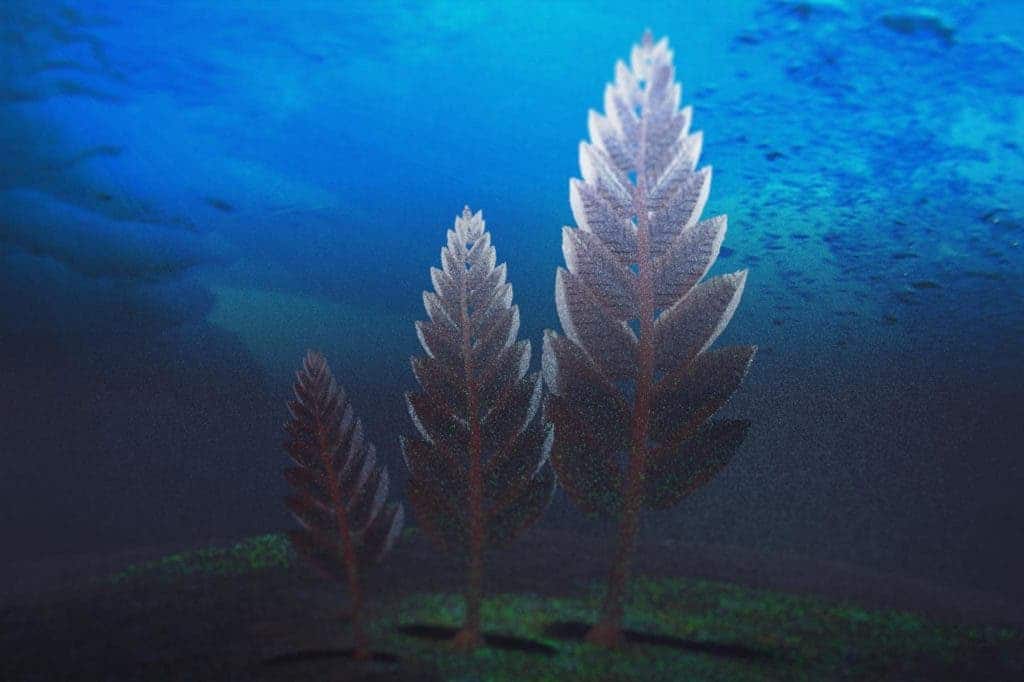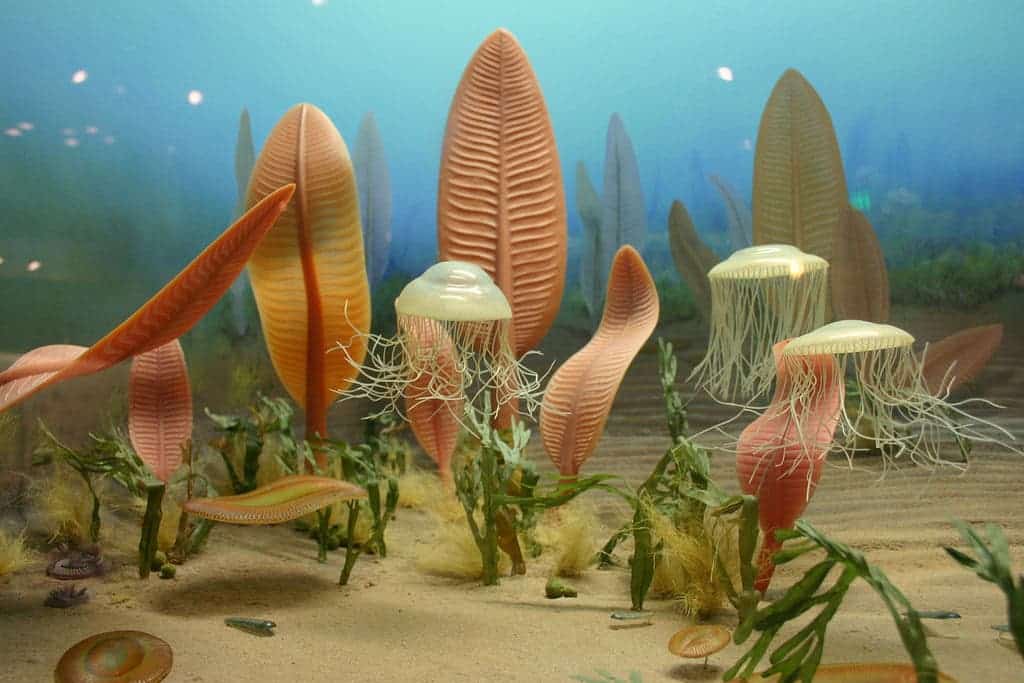A new paper published by researchers from the University of Cambridge and the Tokyo Institute of Technology could answer why life made the transition from the first really small things to the really large organisms we see today.

Life started out with the tiny bits: proteins, viruses, bacteria, algae. Somewhere along the way, however, it also made the transition towards larger organisms — which is how us, dogs, whales, and so on, got to be here today. But why and when did life perform this transition?
A new study determined that one of the first large organisms we know of, rangeomorphs, were able to grow up to two meters in height at a time when most organisms were still going about on the cellular level. Even more impressively, they were able to change their body’s size and shape as they adapted to environmental conditions. The team’s results could help explain how life as we know it today, and how the giants of the past, could evolve from microscopic organisms.
One size fits all
Rangeomorphs were ocean-dwelling organisms that lived between 635 and 541 million years ago in a period known as the Ediacaran period. Their bodies consisted of branches, each with many smaller side branches, that similarly harbored many tiny branches, forming a fractal. It’s a bit like the shape a snowflake has under a microscope, but with many more sets of branching arms.
Rangeomorphs represent some of the earliest large organisms to evolve on Earth, and could grow from a few centimeters up to two meters in height. But they’re also very strange, as far as life goes. In fact, they’re so strange that there isn’t anything living today that resembles them — so we don’t really know how they fed or grew or made more of themselves, or how they fit into the tree of life. And although they look suspiciously plant-like, researchers believe that rangeomorphs were actually animals.
“What we wanted to know is why these large organisms appeared at this particular point in Earth’s history,” said Dr Jennifer Hoyal Cuthill of Cambridge’s Department of Earth Sciences and Tokyo Tech’s Earth-Life Science Institute, the paper’s first author.
“They show up in the fossil record with a bang, at very large size. We wondered, was this simply a coincidence or a direct result of changes in ocean chemistry?
To find out, the team used micro-CT imaging and took photographic measurements of rangeomorph fossils uncovered in south-eastern Newfoundland, Canada, the UK, and Australia. They then fed this data into computer models to help them better understand the animals’ physiology.
They report that rangeomorphs show the earliest known evidence of nutrient-dependent growth in the fossil record. Obviously, all organisms depend on nutrients to survive and grow but certain species can actually change body size and shape depending on nutrient availability (ecophenotypic plasticity).

Image credits Ryan Somma / Flickr.
Rangeomorphs show a very strong degree of ecophenotypic plasticity, which the team believes gave them a very powerful adaptive advantage. The Earth was going through very dramatic changes in the Ediacaran, and rangeomorphs could rapidly “shape-shift” to adapt to environmental pressures — for example, they could grow to a tall, tapered edge if the seawater above had higher levels of oxygen.
“During the Ediacaran, there seem to have been major changes in the Earth’s oceans, which may have triggered growth, so that life on Earth suddenly starts getting much bigger,” Hoyal Cuthill added.
“It’s probably too early to conclude exactly which geochemical changes in the Ediacaran oceans were responsible for the shift to large body sizes, but there are strong contenders, especially increased oxygen, which animals need for respiration.”
This shifting chemical background came in the wake of a large-scale ice age known as the Gaskiers glaciation. The cold climate kept nutrient levels low, which in turn kept mean organism body sizes low. But a sudden (geologically speaking) increase in free oxygen and nutrients during the Ediacaran period, ecosystems could support much larger organisms, meaning large rangeomorphs could have been a direct result of major changes in climate and ocean chemistry.
But environmental changes would eventually spell their undoing, too. While rangeomorphs were very well adapted to their Ediacaran lifestyle, oceanic conditions continued to change, leading to the ‘Cambrian Explosion‘ — an unprecedented evolutionary development, which saw an immense explosion of biodiversity and to which most major animal groups in the fossil record can trace their ancestry. Between shifting environmental conditions and strong competition and predation, rangeomorphs went extinct.
The paper “Nutrient-dependent growth underpinned the Ediacaran transition to large body size” has been published in the journal Nature Ecology and Evolution.


